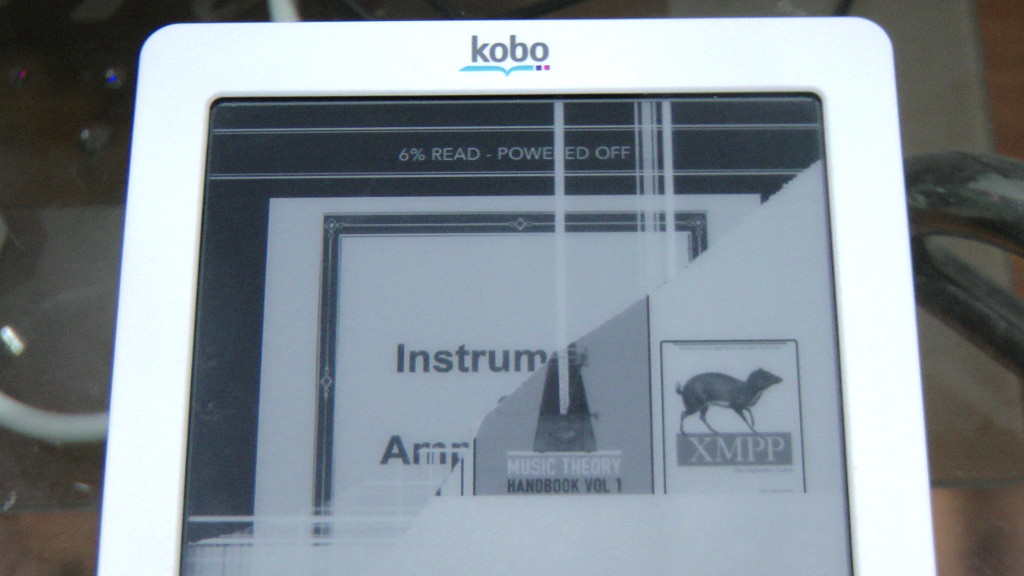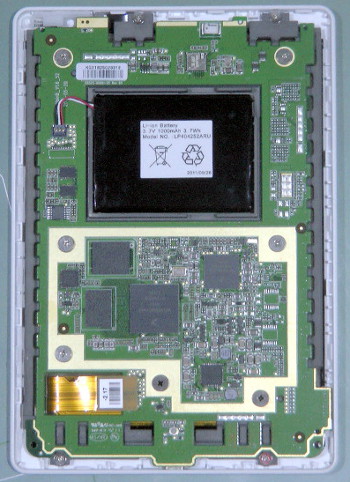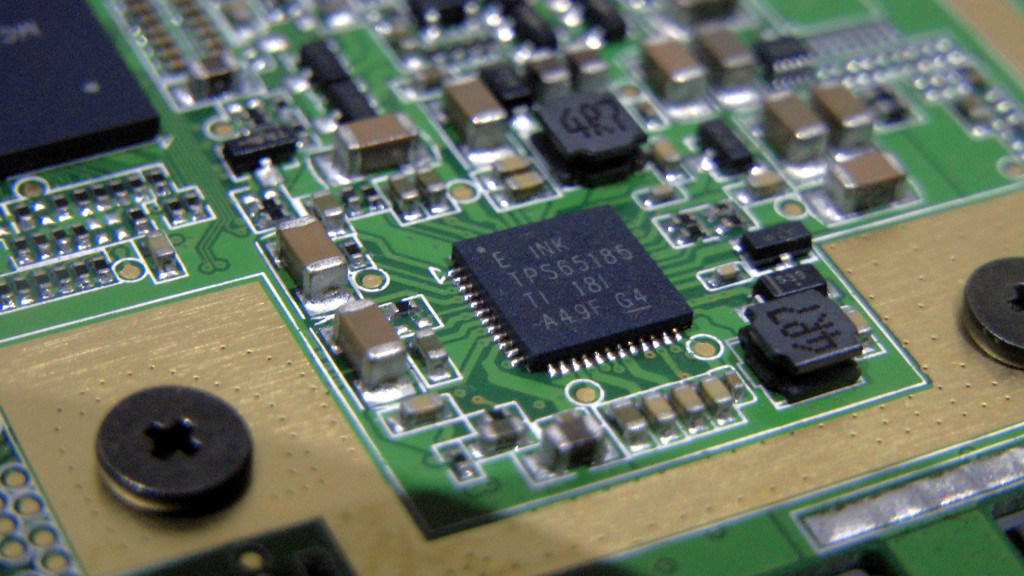
The e-ink screen of my Kobo Touch ebook reader broke, probably because it didn’t like being bent regularly. It was a little over a year old when it happened, way too soon to give up on it, so I decided to take it apart and replace the screen if possible.

If you want to open any device that is held together by plastic parts with teeny plastic flaps that snap into each other: use a guitar pick. The Jazz III pick (my favourite) is very well suited for the job. I used it to pry apart the plastic frame of my netbook before. The Kobo touch is really a beautiful device (if you have one, I encourage you to look inside) and is much easier to take apart than my netbook. The battery is much smaller than I expected and the PCB is very clean and ordered.

After removing the back cover
The screen is glued to a very robust frame (metallic, looks like iron) with two stripes of adhesives; with some nudging I could separate the two components. The screen’s backside is shiny, polished; mesmerizing. If you want to keep it that way, don’t touch it with your filthy fingers.
Originally, I wanted to take the opportunity to upgrade the screen to whatever model is compatible with the driver chip. This is printed on the chip:
E INK
TPS65185
TI 181
A49F G4
As it was difficult to get detailed documentation on the types of panels that can be used with the chip I decided to simply get the same model as the broken screen: ED060SCE LF T1. The same screen seems to be used in the Nook.
I paid CNY 180 for a replacement. It appears to be a more recent revision of the screen; there’s a little IC on the flexible connector and a few numbers on the labels have changed. It works fine, though ghosting seems to be significantly worse. The Kobo UI doesn’t always force a full page refresh; this only really affects the library browser, though. (The refresh rate can be configured for reading mode.) The more often a part of the screen is updated the more gray noise appears all over the screen.
Comments? Then send me an email! Interesting comments may be published here.